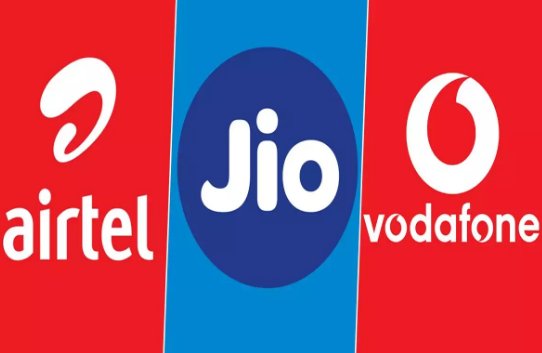New Delhi: Top two telecom companies Jio and Bharti Airtel are consolidating market share moving the industry possibly towards a ‘near 2-player structure’, with Vodafone Idea facing the prospects of losing revenue market share (RMS) as it struggles financially, according to a report by IIFL Securities.
The latest note by IIFL Securities also indicated that tariff increase may not be immediate and instead sees a “high likelihood of price hike in 12-18 months”.
“The industry shake-up that ensued post Jio’s entry has resulted in a 3+1 market configuration. In our view, the industry is moving to a near 2-player structure – Jio and Bharti – with Vi (Vodafone Idea) likely to lose RMS as it struggles financially,” it said.
It expected Voda Idea to witness “accelerated RMS loss” due to the tight timeline on statutory payments and “significant tariff hikes looking at least 12 months away”.
Bharti, it added, remains well-placed to benefit from improved industry structure, likely expansion in ‘share of wallet’ and falling spectrum and equipment capex intensity.
“We expect Bharti’s revenue market share (RMS) in India mobile to rise, from 33 per cent in 2QFY21 to 37 per cent in 3 years. India non-mobile and Africa businesses remain strong,” IIFL Securities said in its note.
It pegged Jio’s revenue market share at 38 per cent as on Q2FY21, Vodafone Idea’s share at 22 per cent, and that of state-owned Bharat Sanchar Nigam Ltd at seven per cent.
It also pointed to a high likelihood of price increase in 12-18 months.
“Jio has driven down industry pricing to very fine levels for 4 years, but post the imminent Jio-Google smartphone launch, will likely favour a price hike, given very low ARPU (Average Revenue Per User) levels currently, and the need for RIL’s USD 45 billion plus investment in Jio to earn decent returns,” it said.
Overall, telecom’s wallet share could rise significantly after falling to less than half its level 10 years ago.
The industry has bid for spectrum worth Rs 3.6 trillion in the past 10 years, due to competitive intensity, supply constraints and the regulator’s high reserve prices, it said and added that inadequate spectrum also resulted in high equipment intensity.
The availability of large quantities of spectrum and fewer bidders in future auctions should aid economical capacity addition and boost Bharti’s Return on capital employed (ROCE) significantly, the report added.
PTI






































